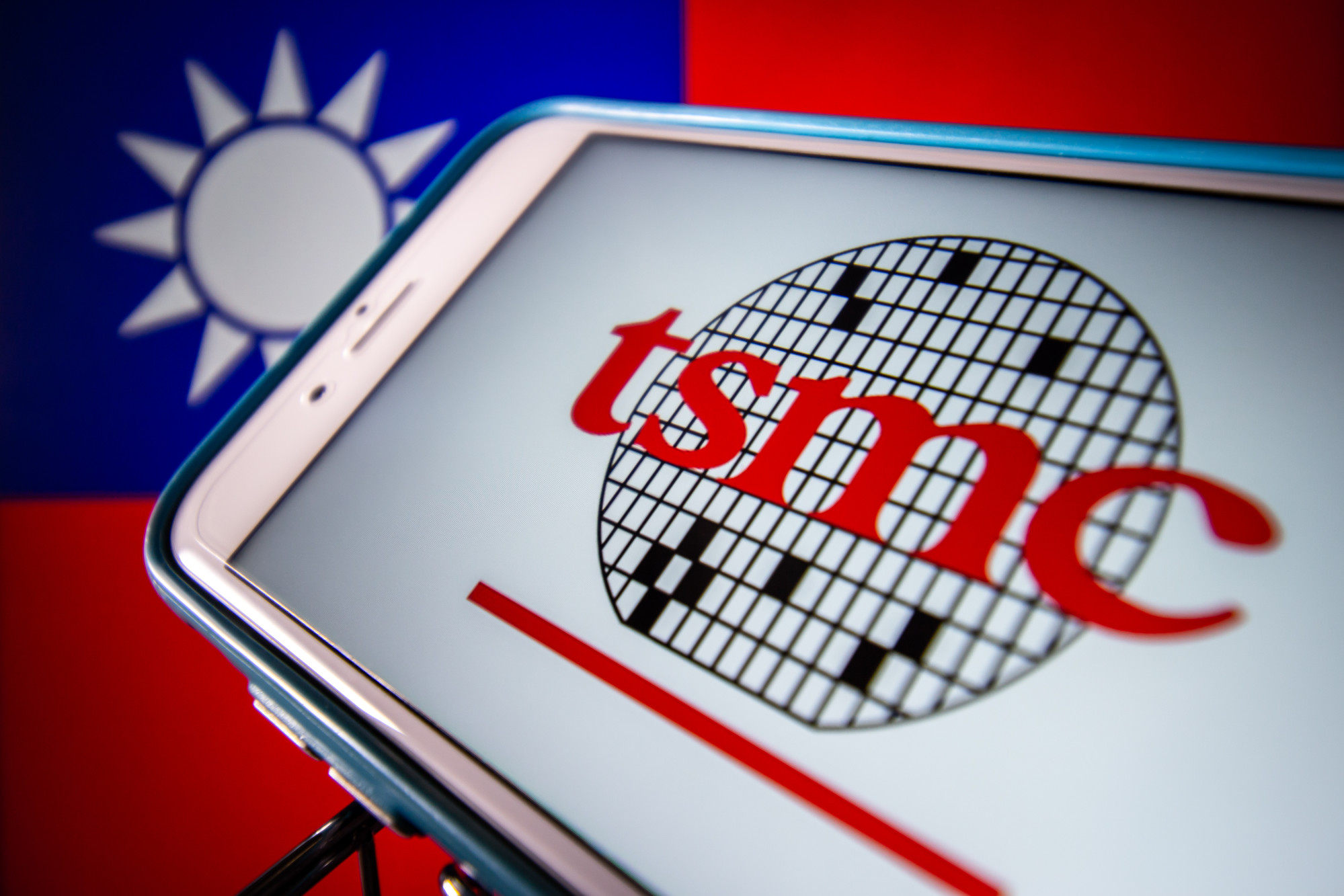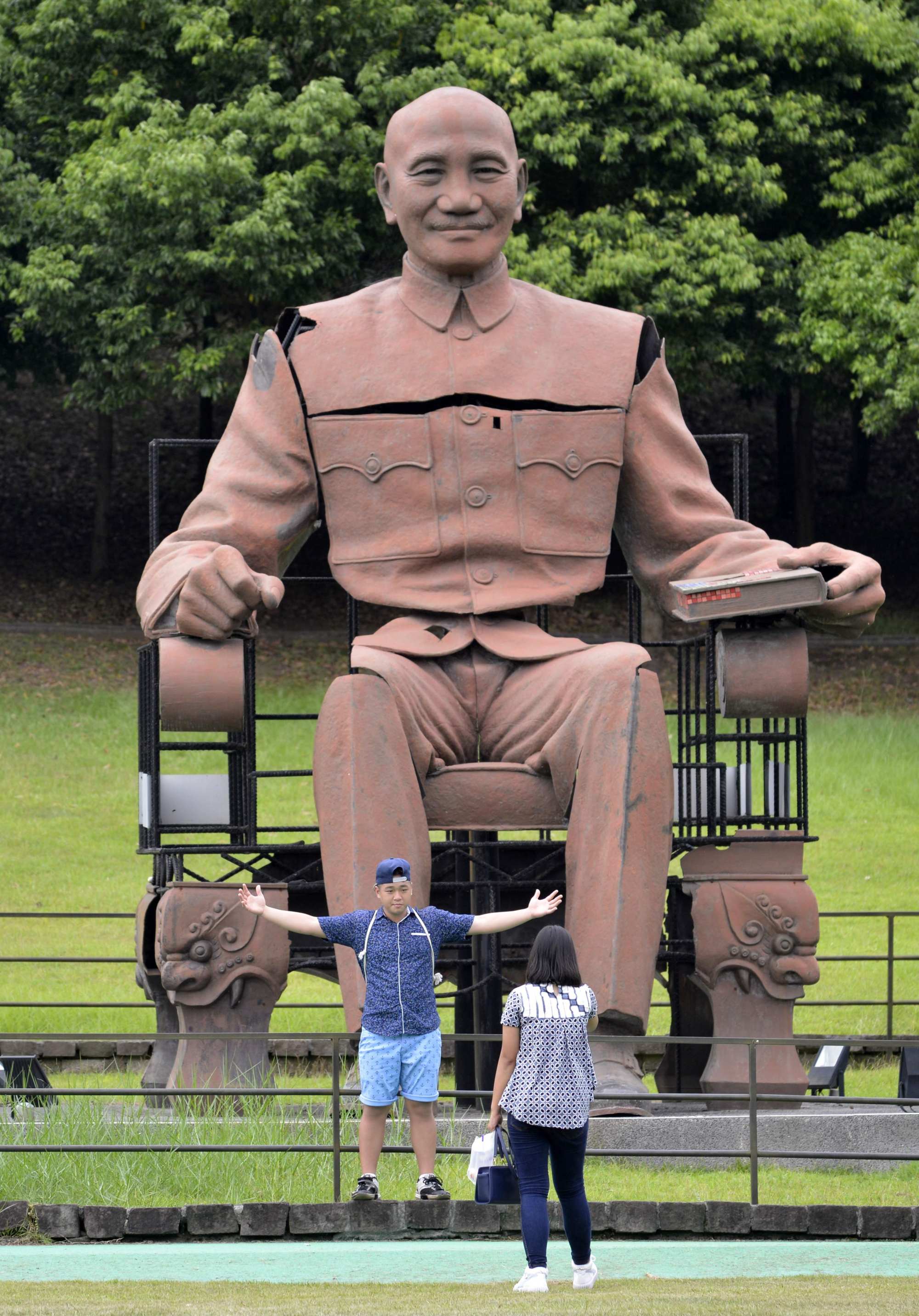
Fifty years later, despite US pivot, Taiwan has done well economically
- The self-ruled island built itself into a powerhouse, first with cheaply manufactured products then as an indispensable player in the tech industry
- Mainland China and US are entwined with Taiwan’s economy, a boon to the island’s unflinching annual GDP growth
After the United States formally switched diplomatic recognition from Taiwan to mainland China in 1979, the cast-off island had to strike out on its own. That fate has spawned the world’s 22nd-biggest economy, backed by a giant, globally linked tech industry and all but zero poverty.
Since the Chinese civil war of the 1940s, Taipei’s authoritarian Nationalist government had counted on US support militarily and diplomatically, when Washington saw Taiwan as a Beijing counterweight and called it “free China”.

But Washington severed diplomatic relations in 1979 to recognise mainland China after signing the Shanghai Communique that emerged from the icebreaker meeting in 1972 between Nixon and his Chinese counterpart Mao Zedong.
“It was like self-reliance,” recalled Danny Ho, an economist and chief executive of the DMI energy consulting firm in Taiwan. “The Nationalist government was very proactive in investing in Taiwan’s infrastructure, including ports and facilities for oil and gas, because to develop they had to depend on selling overseas.”
Fifty years after Nixon arrived in Beijing with an intention on both sides to cast Taiwan adrift, the island has thrived both in spite of – and because of – that diplomatic isolation.
After 1979, Taipei built the island’s economy on cheap labour and infrastructure left over from Japanese colonisation in World War II – even as the increasingly powerful mainland kept up military pressure on Taiwan to unify under one flag. Mainland forces had won the civil war in 1949 and the Nationalists fled to Taiwan where they rebased.
Nixon was keen to boost ties with mainland China because of its market potential backed by a large, fast-growing population.
Taiwan carved out its industrial base despite the global energy crisis of the 1970s, said Joanna Lei, a former Taiwan lawmaker and chief executive of the Chunghua 21st Century Think Tank in Taiwan. “The gradual withdrawal of American support of the Nationalist government came at a worst possible time,” she said.

Strongman Chiang Kai-shek’s government helped get Taiwan past the oil crisis and stagflation of the 1970s by building 10 major infrastructure projects, Lei said. The projects launched in 1974 covered ports, power plants, highways and the major international airport for a total of about NT$300 billion (US$10.6 billion).
Taiwan’s industrial base was already taking off with a boom in factories that pumped out low value-added goods such as petrochemicals, footwear and rubber products, Ho said.
Petrochemical revenue reported by Taiwanese companies now comes to about NT$800 billion to NT$900 billion per year, he estimated.
Government departments in that era led some of Taiwan’s flagship firms, including the government-operated oil refiner CPC Corp – which continues to hold down energy prices so industry can flourish.
A separate government research and technology initiative fostered tech firms like the contract chip maker Taiwan Semiconductor Manufacturing Co (TSMC) – a behemoth of the world’s hi-tech sector today. That initiative made “Taiwan a hi-tech manufacturing powerhouse”, Lei said.

“The about-face by the US hurt Taiwan tremendously,” she said. “Many felt the island was to sink, figuratively, and fled.”
But, she said, the government ultimately “was able to instil confidence with strategies that eventually transformed the island’s economy to the top of the ‘four little dragons’”.
Taiwan became that dragon – also known as an Asian tiger or a newly industrialised economy – in those years along with Japan, Singapore and South Korea. All four economies were known for rapid industrial growth and a sudden boost in living standards. Taiwan’s GDP per capita had reached US$28,180 in 2020.
“With the need to reinforce Taiwan’s position during the diplomatic loss, Taiwan … enjoyed a rapid economic development beginning from the late 1980s,” said Huang Kwei-bo, secretary general of the Taiwan-based Association of Foreign Relations.
The Shanghai Communique … helped create a regional environment in which Taiwan and other countries thrived
Hi tech emerged in the 1980s, and TSMC now produces more chips annually than any of its rivals. The sector that runs largely on contract assembly of PCs and phones makes up about a fifth of Taiwan’s US$785.6 billion economy today.
Moreover, mainland China and the US are both intimately intertwined with Taiwan’s economy, a boon to the island’s unflinching annual GDP growth.
Tech firms based in the US depend now on Taiwan’s chips and other components. Taiwan’s direct investment in the United States came to US$13.7 billion in 2020, up 13.6 per cent over 2019, according to the Office of the US Trade Representative.
But there are signs that US companies will not depend on Taiwan forever. US President Joe Biden campaigned in 2020 on continuing to “reshore” the manufacture of what he called “critical products” rather than depend on imports – the third president to focus on that. Former president Barack Obama had kicked off that effort and Donald Trump sustained it.
US efforts to reshore China supply chains blasted as ‘empty talk’
Of the company’s US$40 billion-US$44 billion capital budget, 70 to 80 per cent would be allocated for advanced chip-processing technologies, the spokesperson added.
US officials have also approached Taiwan’s second-biggest chip maker, United Microelectronics Corp (UMC), about setting up a factory in the Midwestern industrial city of Detroit, according to Taipei media reports. A company spokesperson declined in March to comment on the possible US investment, however, and called it “market speculation”.
The Biden administration still might seek parts from Taiwan’s manufacturing sector for the solar infrastructure and clean-burning car components of its “Build Back Better” industrial policy agenda, said Darson Chiu, deputy macroeconomic forecasting director with the Taiwan Institute of Economic Research.
Taiwan remains one of the biggest investors in mainland China, too. Taiwanese factories and retailers regard the mainland as a source of relatively cheap labour, embrace its geographic proximity, speak a common language and prize its giant domestic consumer market.
From 1991 to mid-2021, Taiwanese investors had 44,577 projects in the mainland totalling US$193.51 billion, according to a Taipei government website; cross-strait trade was US$166 billion in 2020.
‘Growing caution’ sees Taiwan diversify investments away from mainland China
And despite political differences, Chiu noted, the mainland would need Taiwan semiconductors for the foreseeable future.
The Shanghai Communique that ushered in Washington’s diplomatic recognition of Beijing played its own part in Taiwan’s connectivity to the two superpowers.
Beijing has always regarded Taiwan a rogue province, to be reunited with the mainland eventually, by force if necessary.
In the communique, Washington “acknowledges” a Taiwan dispute without taking sides.
In 1979, to offset the recognition of mainland China, Congress passed the Taiwan Relations Act, which committed the US government to “preserve and promote extensive, close, and friendly commercial, cultural, and other relations between the people” of Taiwan and the US.

The US is now among more than 100 countries with de facto consular and trade relations allowing Taiwan to export and invest worldwide. Beijing normally accepts Taiwan’s overseas trade and investment ties as long as they avoid spilling into formal diplomatic or military exchanges.
“Other countries have managed to work around Taiwan being officially a non-state enough for Taiwan to be prosperous and a major world trader,” said Denny Roy, senior fellow at the East-West Centre think tank in Hawaii.
“The Shanghai Communique was an important part of a US-China reconciliation that helped create a regional environment in which Taiwan and other countries thrived,” he said. “The contribution of the communique was that it successfully finessed the Taiwan issue enough to allow both sides to bypass it.”
Window for possible PLA attack on Taiwan ‘unpredictable’, US admiral says
Beijing’s frictions with Washington and cold relations with Taipei, though, have caused fresh concern, especially as US-Taiwan ties have strengthened since 2017.
“The US one-China policy is increasingly hollow,” said Shi Yinhong, an international relations professor at Renmin University in Beijing. “What the US is doing is to dilute and weaken the promises it had made before.”
But Feng Hau, 22, a fourth-year international relations student at Tamkang University in Taiwan, said the Sino-US events of the 1970s were a “warning signal” that Taipei could not necessarily rely on Washington and must sustain trade with the mainland.
“It is important to raise self-strength and confidence as individuals, but Taiwan’s economy still relies on international trade – especially with China,” Feng said.










